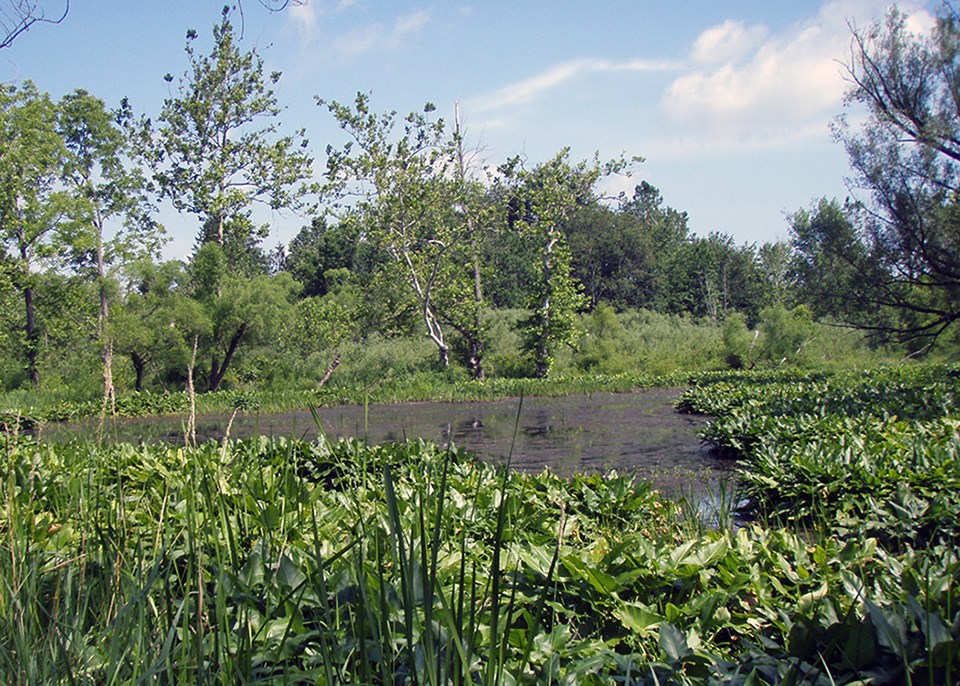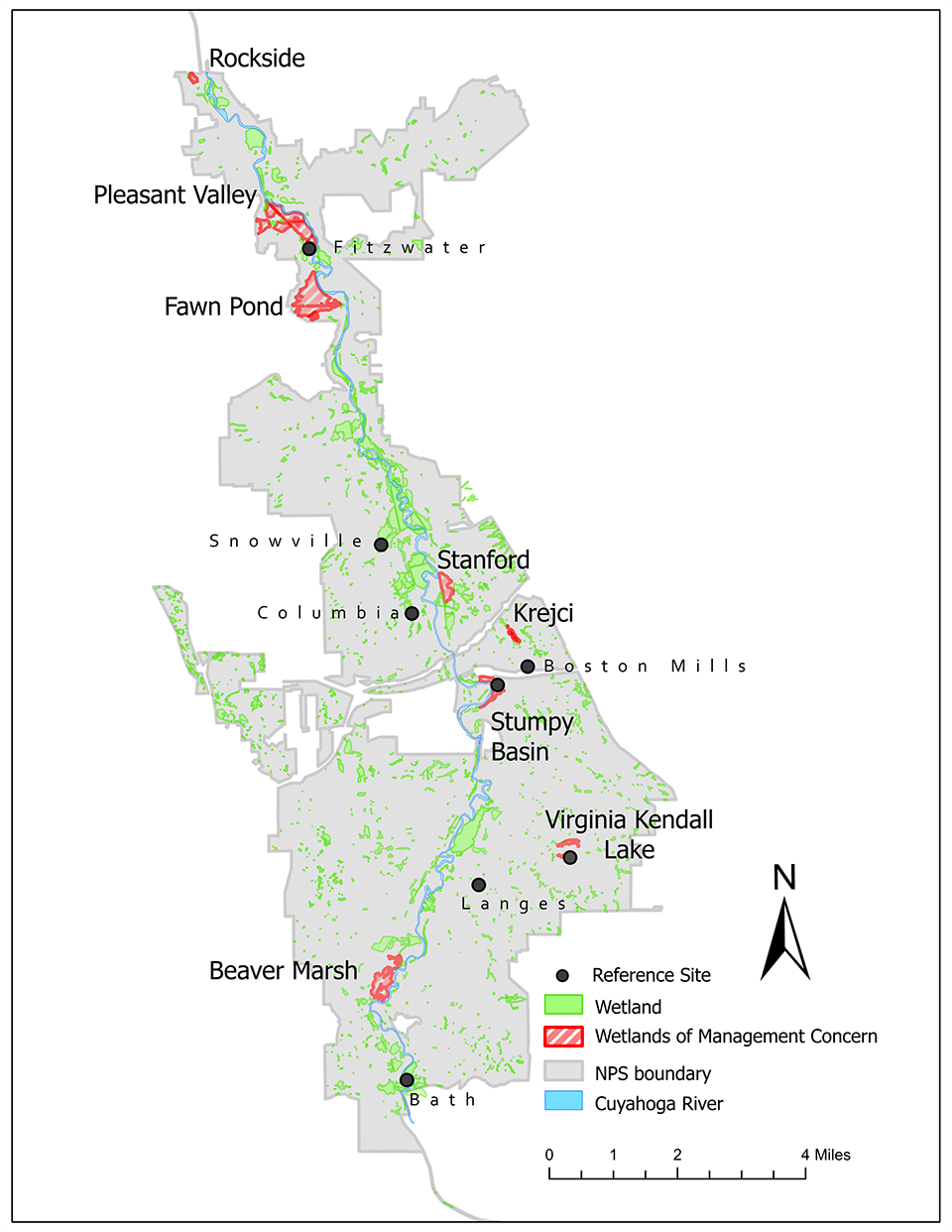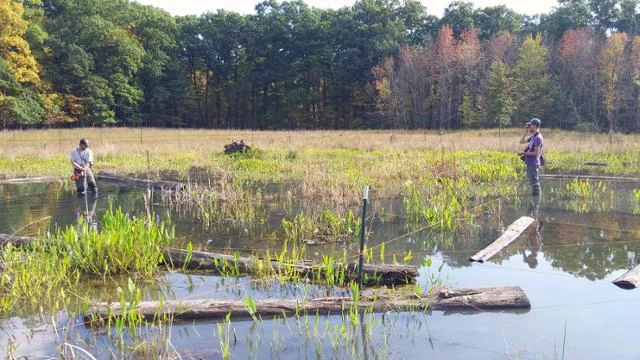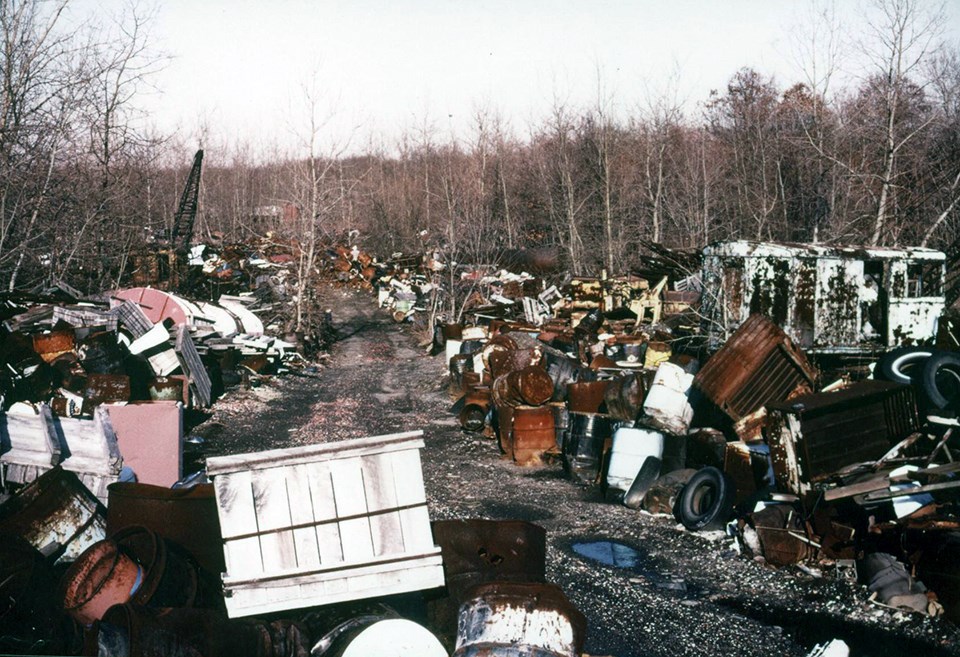Last updated: December 19, 2023
Article
Sentinel Wetlands Monitoring at Cuyahoga Valley National Park

NPS
Why Do We Monitor Wetlands?
Wetlands are unique natural features and vital components of the landscape. Plants that live in wetlands are usually quite different than plants in the surrounding areas. This is because the soils in wetlands stay soaked with water for a long time after large rains or when groundwater tables are at or just below the soil surface. Wetland habitats are home to thousands of plant and animal species, including nearly half of all US endangered species. They also protect water quality, reduce erosion, and provide flood protection.
In Ohio, 90% of original wetlands are gone. Invasive plants, increased storm water from development, drainage ditches, and other disturbances alter natural wetland functions. The National Park Service Heartland Inventory and Monitoring Network monitors wetlands in Cuyahoga Valley National Park to protect these unique ecosystems and the plants and animals that depend on them. There are more than 1,500 wetlands within the park boundary.

NPS
Sentinel Wetlands
There is a large wetlands monitoring program at Cuyahoga Valley National Park. As part of this, scientists in the Heartland Inventory and Monitoring Network intensively monitor 20 important ones called sentinel wetlands. These fall into two categories. The first are reference wetlands, examples of the highest quality and least disturbed wetlands in the park. The names of these sites are Boston Mills, Langes, Kendall Lake, Columbia Run, Stumpy Basin, Snowville, Bath, and Fitzwater.
The second category is wetlands of concern to park managers. There are three kinds of these: rare habitats, wetlands that are part of habitat restoration projects, and wetlands that are part of mitigation projects. The rare habitat sites are at Beaver Marsh, Stumpy Basin, and Kendall Lake. The sentinel restoration wetlands are Fawn Pond, Stanford Run, and Pleasant Valley. Mitigation wetlands are created to make up for wetland loss and environmental impacts in other areas. The sentinel mitigation wetlands include Krejci (mitigating the former Krejci Dump), Rockside Marsh (mitigating the I-271 bridge replacement), and Brookside Marsh (mitigating the I-80 bridge replacement).
What Do We Measure?
At each monitoring site, we record the land uses in the surrounding area and assess the wetland size, vegetation, hydrology, and condition. In 37 permanent sampling plots across the sentinel wetlands, we record the cover of each plant species identified. This is a measure of how much area the species occupies. Woody-stemmed plant density is measured. If the woody plant is more than 3 feet tall, we measure the diameter of the stem. We use our sample plot data to calculate metrics that allow us to score the overall health of each wetland. Some of these variables are the percentage of sensitive plant species, the percentage of invasive grasses, and species richness (total number of species). The higher the score, the better the wetland condition.
Iniitial surveys were completed in all wetland plots between 2008 and 2015. All plots were resurveyed in 2018 to look at trends in wetland condition. We will continue to monitor these wetlands to understand how they may be changing over time and to evaluate restoration efforts.

NPS
Condition of Park Sentinel Wetlands
Boston Mills, Kendall Lake, Stumpy Basin, Columbia, and Beaver Marsh are all in excellent condition based on one or more plots in each wetland. They have unique habitats with specialized plant species. Fawn Pond is in good condition at most plots and scores very high in comparison to other wetlands within the riverine mainstem class. Wetland classes are determined based on the hydrology and geology of the wetland site.
Proposed restoration projects at the Pleasant Valley wetland complex and Fawn Pond should be re-evaluated for feasibility and potential success because of their extensive invasive plant communities. Many more wetlands have been considered for restoration since the wetland monitoring program began, and there may be more feasible options based on the park's restoration goals at this point. A stream restoration project was completed at Stanford Run in 2020 and we are currently documenting the changes.
Condition scores across mitigation wetlands are low. Brookside Marsh and Rockside Marsh no longer meet the benchmarks originally established by the US Army Corps of Engineers and the Ohio Environmental Protection Agency. Krejci is still a young mitigation site, and we will need more time to determine the success of this mitigation wetland, but the short-term outlook is good. Continued invasive species control efforts in the park will be crucial for the long-term success of these sites.
Repeat surveys in 2018 indicated that wetland condition stayed the same or slightly improved in 25 of the 37 plots. In 11 plots, invasive grasses such as cattail, common reed grass, and reed canary grass covered more than a quarter of the sampled area. There was an increase in invasive grass cover in 18 of the sampled plots over time. Significant invasive grass increases of more than 10% occurred in eight plots in Rockside Marsh, Beaver Marsh, Fawn Pond, Brookside Marsh, Stumpy Basin, and Pleasant Valley.
Invasive plant infestations appear to be the most widespread threat to wetland ecosystems in the park. They are also the most controllable of all the threats. We are finding some sensitive species present even in the lowest scoring wetlands, which indicates that invasive plant species control efforts could pay off immediately with a resurgence of native plant communities.

NPS
What Are We Doing to Help?
Our sentinel wetland monitoring effort confirmed what we already suspected. Invasive plants such as common reed are established and quickly pushing out native plant communities in important wildlife areas. The Nature Conservancy has a grant to restore nearly 600 acres of wetlands in the Cuyahoga River Area of Concern from 2024 to 2027. The project will treat invasive species that threaten wetland bird habitat, nesting sites, and foraging grounds.
The focus of the Nature Conservancy project is on large wetland complexes and Cuyahoga Valley National Park sentinel wetland sites where we are conducting long-term monitoring. It includes Beaver Marsh, Stumpy Basin, Krejci, Kendall Lake, Brookside Marsh, and Rockside Marsh. Monitoring these wetlands before and after restoration will help us learn which wetland management practices are achievable and effective.

NPS
Did You Know?
Scientists work hard to mitigate, or compensate for, the environmental impacts on ecosystems related to human development of the land. An example of this is the Krejci wetlands that were constructed in 2012 as mitigation for the impacts associated with the Krejci Dump. The dump was an industrial waste salvage yard that operated from 1948 to 1980. The National Park Service acquired the dump in 1985 and cleanup and remediation occurred from 1987 to 2011.
The Krejci mitigation wetlands are a mosaic of seven marsh and wet meadow wetlands scattered in upland prairie habitat. The deeper marshes were designed to collect surface water runoff higher up in the watershed. The water cascades toward the shallower wet meadows before draining west into three streams. Monitoring results for this site indicate that overall plant community and habitat development are good. Scientists expect this site to improve over time if invasive species are controlled.
Tags
- cuyahoga valley national park
- wetlands
- wetlands monitoring
- monitoring
- heartland network
- htln
- cuva
- plants
- midwest
- ohio
- invasive plants
- natural resource management
- park science
- field study
- ecosystem monitoring
- krejci dump
- beaver marsh area
- virginia kendall area
- beaver marsh
- river restoration
- river renewal
- collaborative conservation
- landscape stewardship
- conservation partnerships
